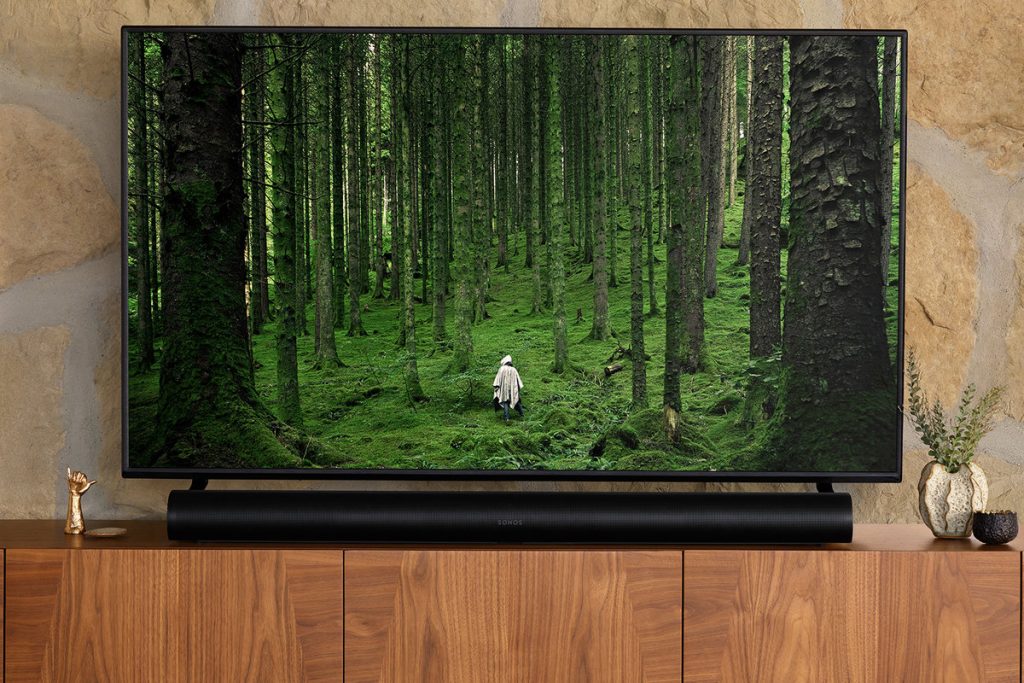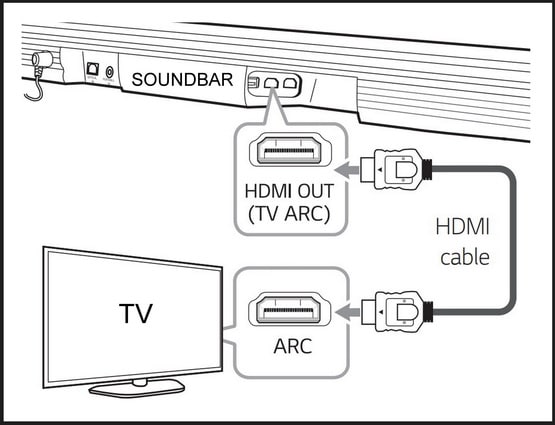
As TV and home cinema technology seems to grow and evolve at a breakneck pace, with a dizzying amount of new features arriving on a seemingly weekly basis, it’s possible to get confused amidst all the choice. That’s why we’ve put together this easy to understand guide that explains the basics of a soundbar and what it can add to your viewing pleasure.
So, just what purpose does a soundbar serve? Simply put, it moves the sound from your TV to a separate speaker to give you a much better audio experience. In the early days of TV design with ample, deep cabinets and cases, there was plenty of room for large speakers, which delivered big sound. As technology advanced, screens and their housings became thinner and smaller— which is overall great news—but this meant there was little room left for substantial speakers. The result is a quiet, thin and tinny sound that makes dialogue difficult to hear, music sound lifeless and movies less than thrilling.
Soundbars fix this by taking the audio that would usually go to your television’s speakers and playing it through an array of specifically-designed speakers and ports to fill your room with rich, immersive sound that makes movies, programmes and even music come alive. The other main benefit to a soundbar is cost – it’s possible to get a great soundbar for less money than going for a full surround sound system with lots of different components.
As you might imagine, there is a vast array of different technology and options available at a wide variety of price-points. However, the improved experience made by even a modestly-priced soundbar over a TV’s stock sound is such that we recommend purchasing one along with any modern TV purchase you make. It’s simply that good!

Simply connect your soundbar to your TV using an HDMI cable
Connecting a soundbar to your TV might feel daunting, but we’d like to assure you it couldn’t be easier. Most soundbars use an HDMI input to get the audio from your TV. HDMI is the most common connection you’ll encounter when it comes to TV and home cinema equipment. Many TVs and soundbars have an ARC (Audio Return Channel), which, simply put, acts as a dedicated channel for audio to move back and forth between the two units. Once ARC connects the cable, you can combine all additional components (such as a Blu-Ray player) directly to the soundbar and not to the TV, controlling volume with your existing telly remote. Though less common, most soundbars will also have the option to be connected via digital optical or RCA cables, but this will vary from model to model.
Some soundbars also connect wirelessly via Bluetooth, reducing the number of wires cluttering up your space. While each setup will be slightly different, it’s usually a case of selecting an option in your TV’s menu and pressing a button on the soundbar to pair both items together in harmony.
1. Better sound from your TV - made easy!
Unfortunately, there’s not enough space in slender modern screens to squeeze in excellent speakers. As a result, sound can be harsh, especially at higher volumes, and voices can be hard to pick out. The sound doesn’t do the picture justice. Soundbars are the easiest way to improve the sound on your TV. These slim, one-box speakers sit directly below your TV and don’t make too much visual impact on your room. The result is punchier sound effects, better bass, wider stereo separation and much clearer vocals.
2. Add a subwoofer…
3. Great for streaming music!
The next step up in soundbars you’re likely to find wireless streaming capabilities. This fantastic feature lets you stream your favourite music or radio show back instantly. They are usually compatible with all types of services, from Apple Music, Spotify, and Amazon Music to Audible, Deezer, TuneIn and many others. No matter what you want to listen to, it’s easy as pie with a streaming soundbar.
As most streaming soundbars work through Wi-Fi, they are secure and upgradable, meaning you can add wireless subwoofers or other speakers at a later date – or even expand to a second room in your home for your music!
4. Upgrade the sound
Because the mastering of Atmos is different, the sound quality is improved, and entertainment comes alive. The LG Sound Bar GX, for example, has 3.1 channels of dedicated sound, pushing the sound and adding the trademark cinematic rumble with its wireless subwoofer.
5. A truly cinematic experience!
Soundbars are capable of using upwards-firing speakers to place sound effects around the room. The Sennheiser Ambeo Soundbar, for example, has 13 individually angled speakers to bounce the sound from the walls and ceiling, adding a new dimension to surround sound for all types of movies and games, placing effects precisely in space.
We hope this guide has been useful in explaining the basic functions of soundbars. There’s a lot of technology beyond the scope of this guide that we didn’t cover, but if you have further questions, you can always call one of our knowledgeable in-store colleagues at your local Richer Sounds and they will be more than happy to help.
Click to take a look at our full soundbar range.





